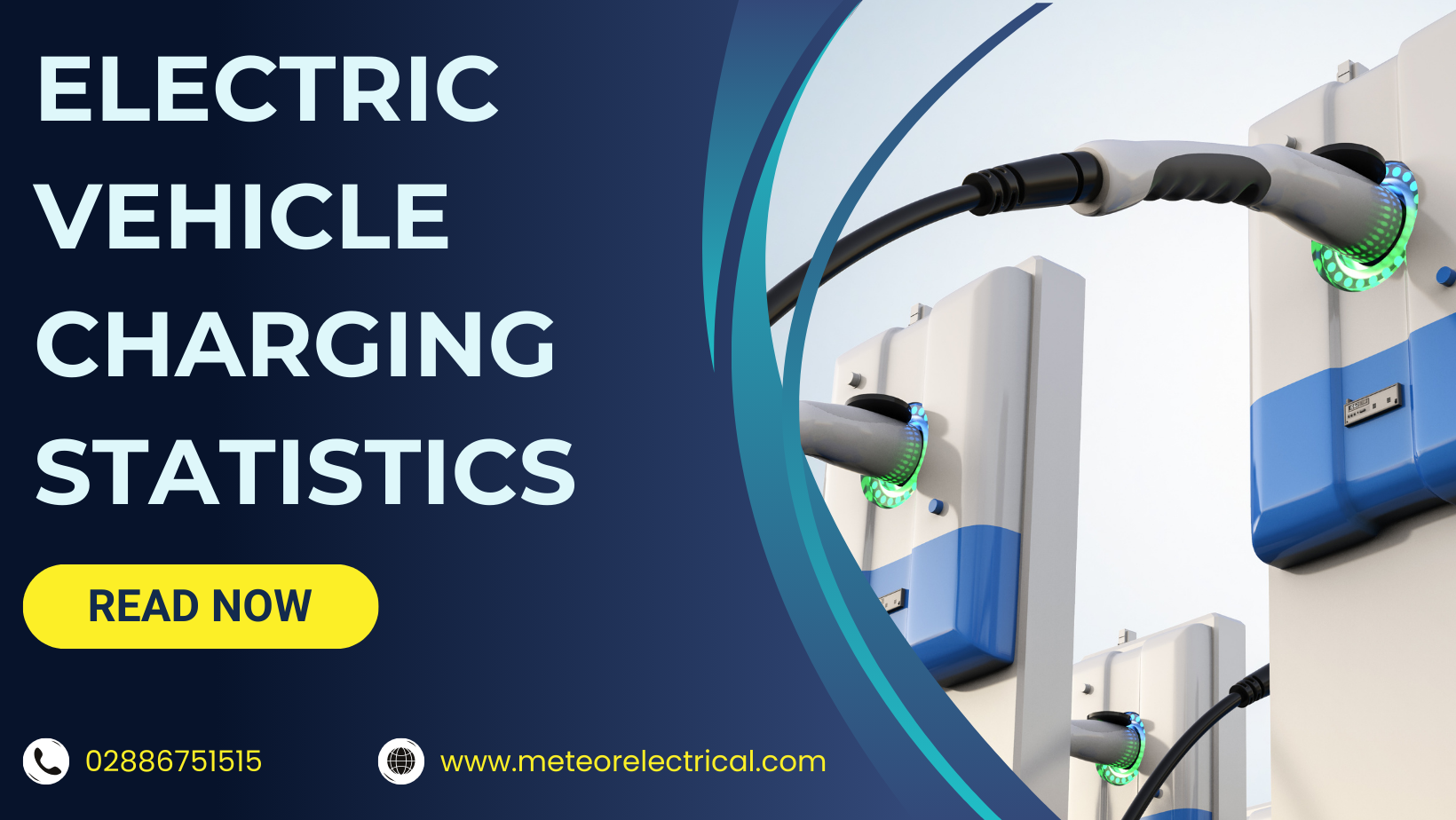EV Charging Statistics
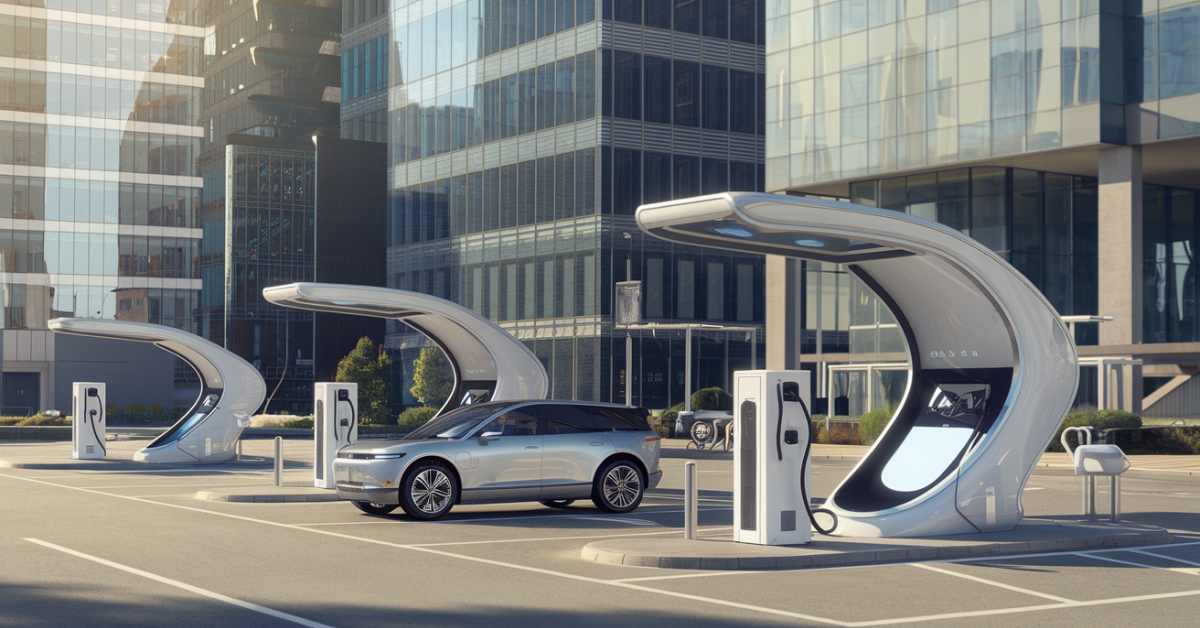
As electric vehicles (EVs) continue to revolutionise the global automotive industry, the infrastructure supporting them is evolving just as quickly. The UK, like many other countries, is experiencing a surge in demand for electric cars, largely driven by government-backed green initiatives and growing consumer awareness about sustainability. With more drivers opting for electric vehicles, the expansion of EV charging stations has become critical. This shift towards electric mobility represents a significant step in reducing carbon emissions and fostering a greener future.
According to ZapMap, the UK now boasts over 46,000 charging points across 17,000 locations, with numbers continuing to climb (ZapMap). With substantial government support and rising consumer demand, the UK is fast becoming a leading market for electric mobility. But how does this impact EV drivers and potential EV owners? What do the latest statistics tell us about the future of EV charging in the UK?
In this article, we’ll explore the growth of EV charging stations, regional variations, the rise of rapid charging, and how the UK is poised to meet the growing demand for electric mobility. Whether you already own an EV or are considering making the switch, understanding these trends is key to embracing the electric future.
Credit: Zapmap
The Growth of Electric Vehicle Charging Stations in the UK
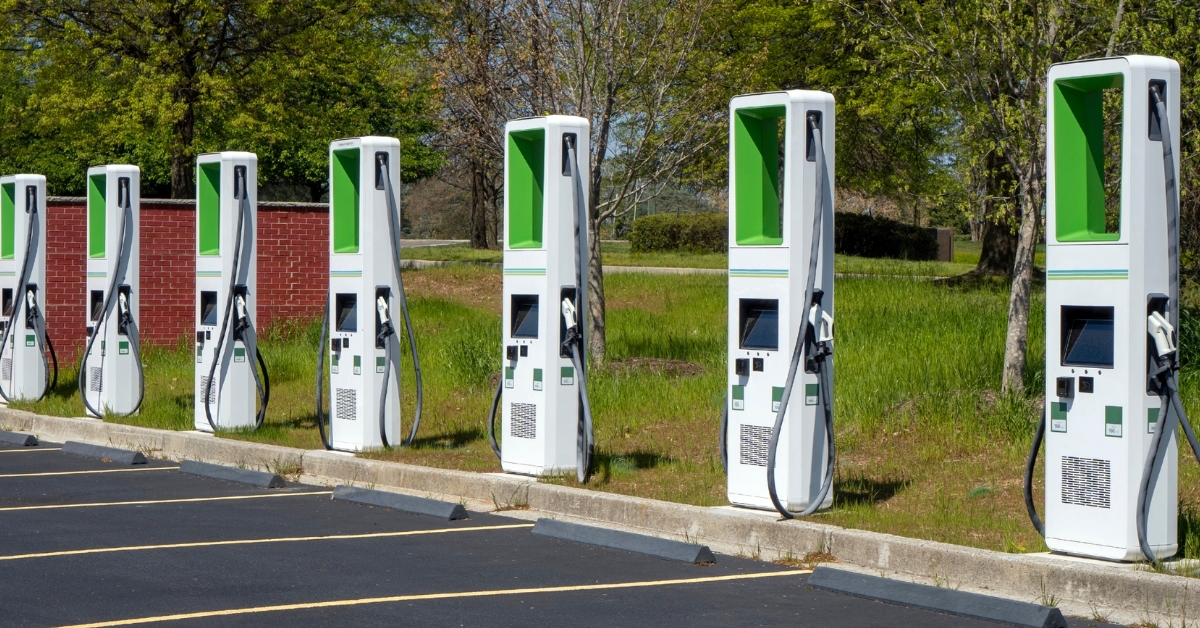
The UK has seen unprecedented growth in its EV infrastructure over the past decade. As of 2023, there are over 46,000 public charging points available nationwide, spread across around 17,000 locations (Gov.UK). Among these, nearly 9,000 are rapid chargers, designed to power vehicles quickly and efficiently. Rapid chargers can recharge an EV battery up to 80% in under 30 minutes, allowing drivers to continue their journey without long delays.
The surge in demand for electric vehicles has been a driving force behind this expansion. Between January 2023 and September 2023, the number of public EV charging stations increased by 25%, reflecting the rapid growth in demand for electric vehicles. This expansion is essential, as industry experts project that the number of EVs on UK roads will reach 14 million by 2030. Meeting this demand requires more charging stations and more powerful chargers to support faster charging (National Grid).
The UK government has committed £1.6 billion to accelerate the development of charging infrastructure, aiming to make EVs accessible to everyone, including those in rural areas. This investment is crucial for ensuring the UK remains on track to meet its Net Zero carbon emissions goal by 2050 (UK Government).
EV Charging Stations Outpacing Petrol Stations
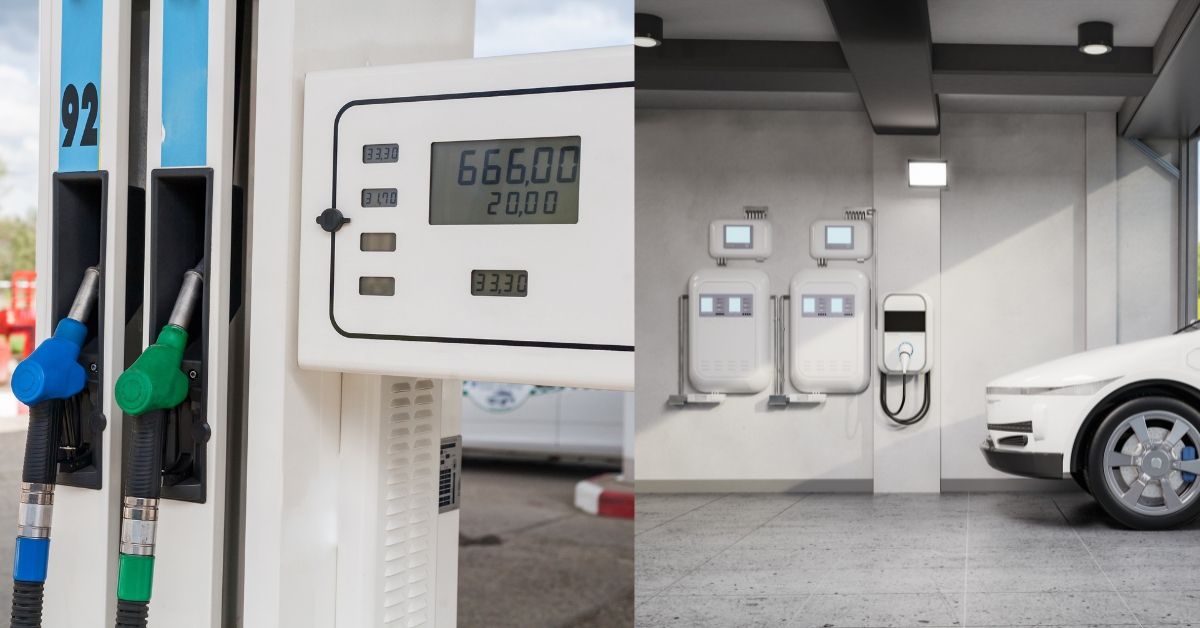
A significant milestone in the UK's transition to electric vehicles occurred in 2023 when the number of EV charging stations surpassed the number of petrol stations. With only 8,378 petrol stations left in the UK, EV charging infrastructure is now more widespread, offering an environmentally friendly alternative to traditional fueling methods (UKPIA). This marks a clear shift in the UK's approach to transportation, as drivers increasingly turn away from fossil fuels in favour of electric vehicles.
A combination of government incentives, environmental awareness, and advancements in vehicle technology has supported the transition to EVs. As petrol stations become increasingly rare, it’s clear that the future of transportation is electric. The decline in petrol stations aligns with the UK's broader goals of reducing carbon emissions and promoting sustainability. Additionally, as petrol prices remain unpredictable, the financial benefits of switching to an EV become even more compelling for consumers.
This shift is further supported by government initiatives like the Plug-In Car Grant, which has helped reduce the upfront costs of purchasing an electric vehicle. These initiatives have encouraged more people to consider EVs as a viable option, accelerating the transition away from petrol-run vehicles.
Regional Expansion of EV Charging Stations
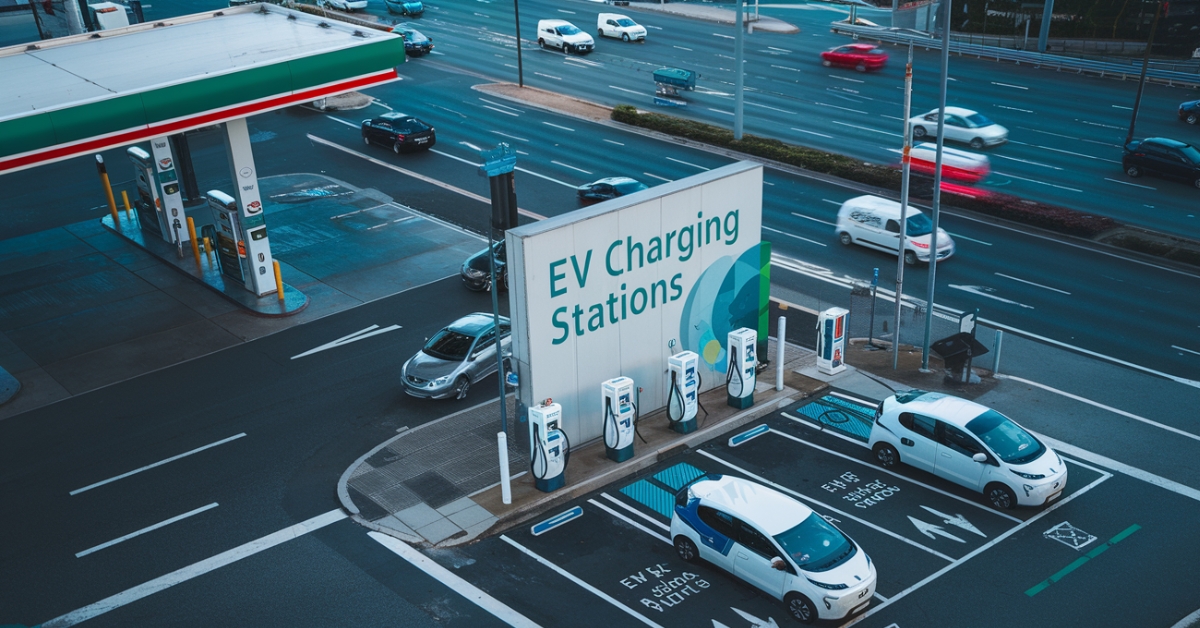
While the overall growth in EV charging infrastructure is impressive, the distribution of these stations is not uniform across the UK. Some regions, particularly urban areas, have significantly more charging points than others. This uneven distribution reflects varying levels of investment, population density, and regional policies promoting electric vehicles.
For example, London leads the charge with 131 charging points per 100,000 people as of September 2023. Scotland follows closely with 69 charging points per 100,000 people, while regions like Northern Ireland lag behind with only 19 per 100,000 (Statista). The high concentration of EV chargers in London can be attributed to the city’s proactive approach to reducing emissions and promoting sustainable transport. On the other hand, rural and remote areas face challenges in terms of infrastructure investment, leading to fewer charging options.
The UK government is aware of these disparities and has implemented several initiatives aimed at expanding EV charging infrastructure across the country. One such initiative is the On-Street Residential Chargepoint Scheme, which funds the installation of charge points in residential areas where off-street parking is unavailable. This scheme is particularly valuable in densely populated urban areas, where finding a suitable location to charge an EV can be challenging.
Moreover, the Transport Decarbonisation Plan includes a commitment to installing 300,000 public charging stations by 2030, ensuring that no driver will be more than 30 miles away from a charging point. This ambitious goal is intended to support the growing number of EV drivers and make electric vehicles a practical option for everyone, regardless of their location.
The Rise of Rapid and Ultra-Rapid Charging Stations
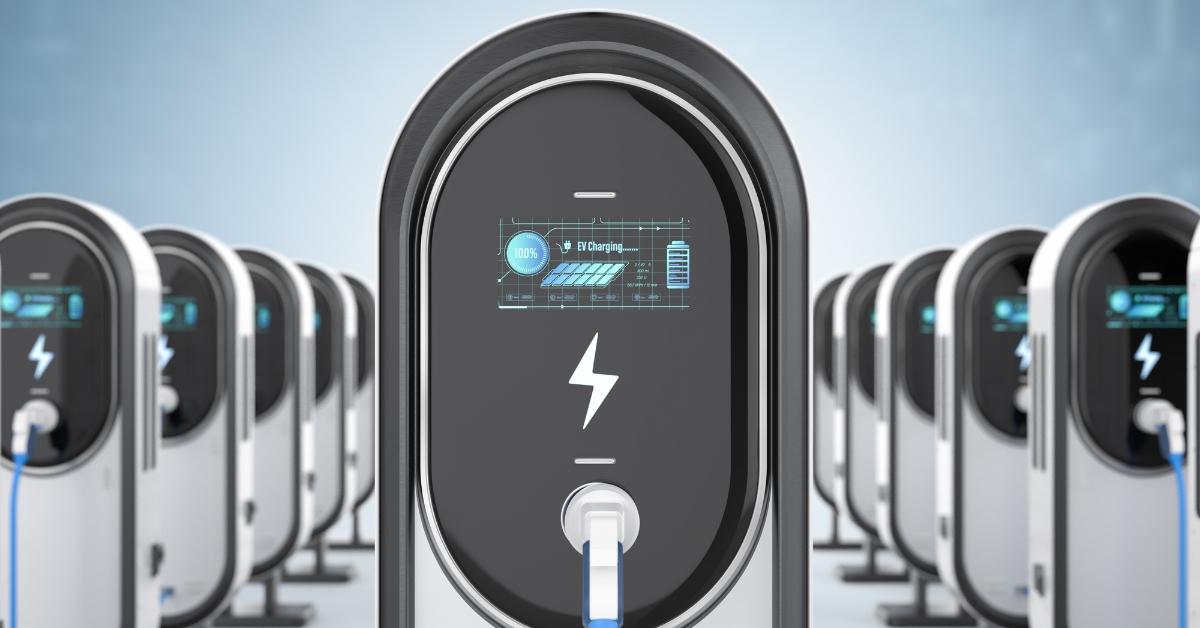
As EV adoption grows, so too does the demand for faster, more efficient charging options. In response, the UK has seen a significant increase in the number of rapid and ultra-rapid charging stations. These stations offer a convenient solution for drivers who need to quickly recharge their vehicles during long journeys.
Rapid chargers, which can charge an EV up to 80% in just 30 minutes, are essential for drivers on long journeys. As of 2023, the UK has nearly 9,000 rapid chargers, with plans to add even more as part of the government’s Project Rapid initiative. This project aims to ensure that every motorway service area has at least six ultra-rapid chargers by 2024 (UK Government). These ultra-rapid chargers can recharge an EV battery in as little as 20 minutes, making them ideal for high-traffic areas like motorways.
Ultra-rapid chargers, which are even more powerful than rapid chargers, are also becoming more prevalent. By 2030, companies like Tesla and BP Pulse plan to install over 10,000 ultra-rapid chargers across the country (BP Pulse). This network of high-speed chargers will make EV charging more convenient, further encouraging drivers to make the switch to electric vehicles. These developments highlight the importance of rapid and ultra-rapid charging stations in supporting the mass adoption of electric vehicles.
Charging Stations for Homes and Businesses
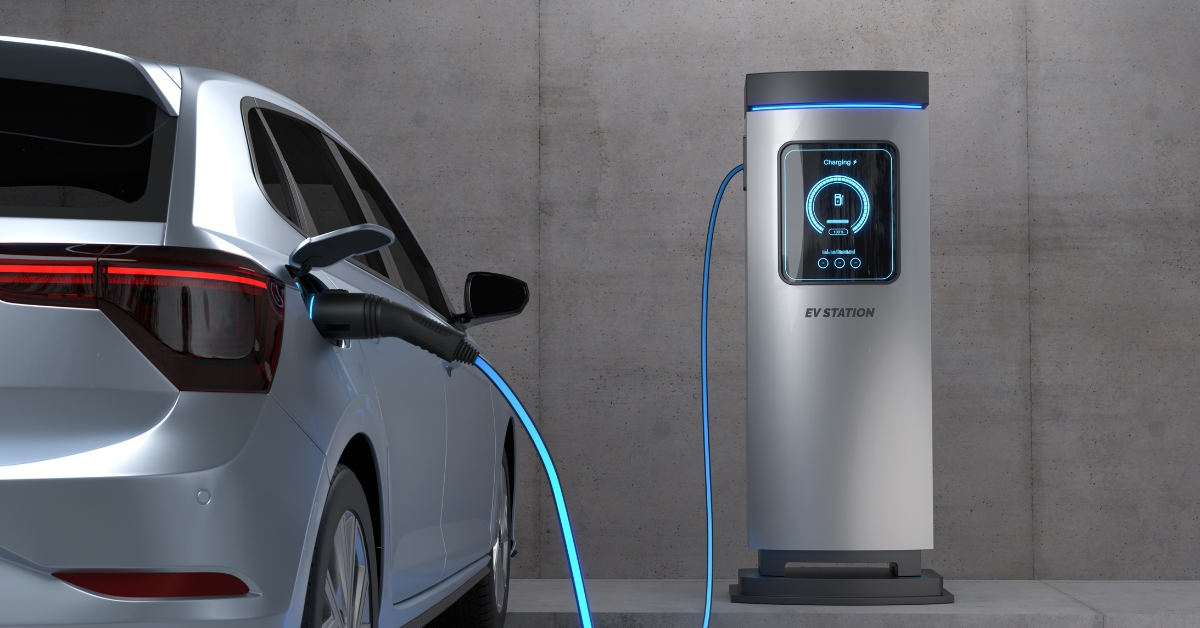
While public charging infrastructure is expanding, many EV owners are also opting to install private chargers at home or in the workplace. Home chargers provide a convenient way to recharge an electric vehicle overnight, and with installation costs averaging around £1,000, they are becoming an affordable option for many drivers (The Co Experts). Home charging stations are particularly useful for those who drive long distances daily or do not have easy access to public charging points.
Installing a home charger offers convenience and financial benefits. Charging an EV at home can be significantly cheaper than using public chargers, especially if done during off-peak electricity hours. The UK government also offers grants to help cover the cost of installing home chargers, making it easier for homeowners to make the switch.
Workplace charging stations are also on the rise, with businesses installing EV chargers for employees and customers. This not only supports the transition to electric vehicles but also provides an additional revenue stream for businesses that can offer charging services to the public. Moreover, offering EV chargers can help businesses demonstrate their commitment to sustainability, which can be a key selling point for environmentally conscious consumers.
The Future of EV Charging Stations
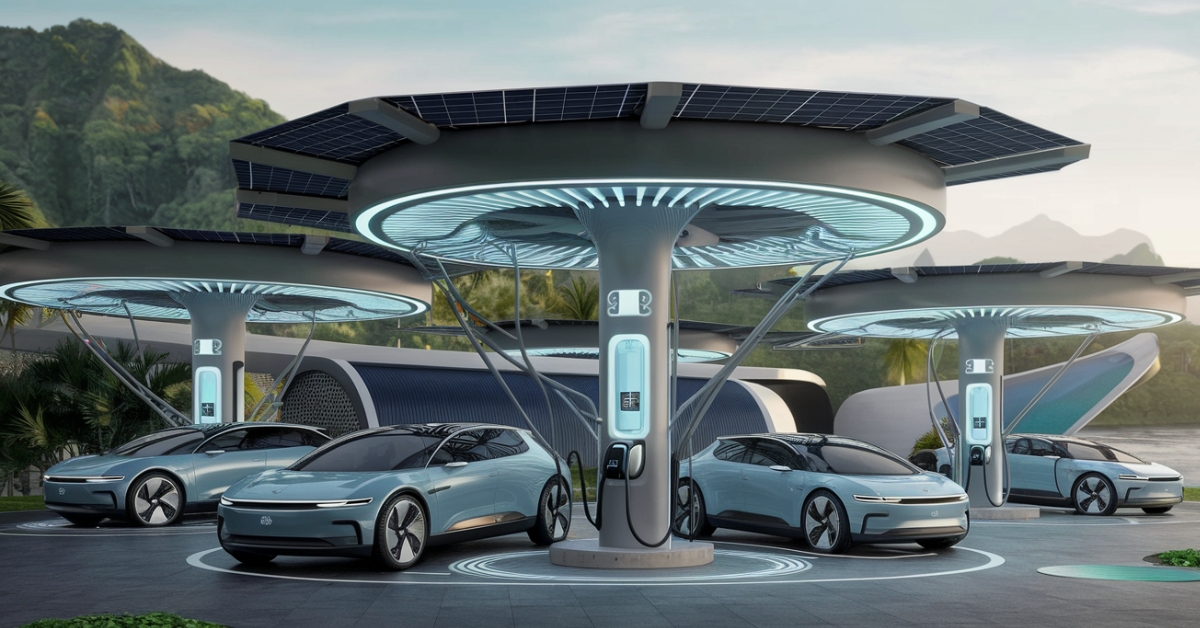
As awareness of electric vehicles (EVs) continues to rise, the future looks bright for the expansion of EV charging stations. Easy access to charging points will be a key driver in encouraging people to make the switch from traditional petrol and diesel vehicles to electric alternatives. As more people opt for electric cars, governments and manufacturers must work together to ensure the infrastructure can meet the growing demand.
Credit: Tesla Jigsaw
Growing Demand for Electric Vehicles

A promising indicator of the future of EVs is the increasing interest among UK consumers. Surveys conducted in 2022 revealed that nearly half of the UK population is considering driving an electric vehicle in the future (Virta). This growing interest presents a significant opportunity for EV manufacturers to produce and market more vehicles, which in turn will create demand for even more EV charging stations.
Experts forecast a 140% annual rise in plug-in electric vehicle sales, with hybrid vehicle sales expected to grow by 12% per year (Statista). This is crucial, as it shows consumers have diverse needs when it comes to electric vehicles. Some may prefer fully electric cars, while others may opt for hybrid options that still offer reduced carbon emissions. The availability of a variety of vehicle types ensures that the market can cater to a broad range of preferences.
However, despite the excitement surrounding EVs, 31% of drivers cited the lack of charging stations as a primary reason for not making the switch (USwitch). This highlights a critical issue: while interest in electric vehicles is high, the infrastructure isn’t yet robust enough to meet consumer needs. For the EV revolution to take off fully, governments and manufacturers will need to prioritise expanding EV charging networks across the country.
Workplace Charging: A Key Driver for Adoption
One often overlooked factor in the adoption of EVs is the availability of charging stations at workplaces. According to recent studies, 60% of EV drivers say that having access to charging stations at work is a significant factor in their decision to switch to electric vehicles (Virta). As more companies recognise the benefits of offering EV charging to employees, this will likely encourage even more people to transition to electric cars. Installing chargers at workplaces not only supports current EV drivers but also raises awareness and encourages those who are considering making the switch.
The Role of Government in Expanding EV Infrastructure
The UK government has taken important steps to support the future of electric vehicles. As of 2022, there were over 1.8 million electric vehicles on the road, a figure that is expected to rise rapidly in the coming years (Gov.UK). While many of these are hybrid vehicles, the market for fully electric cars is expanding quickly.
One of the most significant actions the UK government has taken is the plan to ban the sale of petrol and diesel vehicles by 2030. This shift is expected to dramatically increase demand for electric cars and, consequently, the need for more EV charging stations. The government’s investments in this area outline a clear path for expanding the infrastructure, ensuring that drivers will have easy access to charging points no matter where they live (Autoexpress).
Estimating the Future Demand for Charging Stations
To meet the expected surge in EV ownership, experts estimate that by 2030, the UK will need approximately 2.4 million EV charging units to meet demand (EVChargers UK). While predicting the exact number of stations needed is challenging, this target offers a glimpse of what manufacturers and governments will need to work toward in the next decade. It also highlights the importance of installing charging stations in a way that ensures equal access across urban and rural areas.
Energy Considerations for EV Charging
As more EV charging stations are built, there is a growing concern about the capacity of the electricity grid to handle the increased demand. To address this, many regions are turning to renewable energy as a solution. In Ireland, for example, the government has set a goal of ensuring that 70% of grid energy comes from renewable sources by 2030 (SEAI). This shift toward renewable energy is critical in ensuring that the EV charging infrastructure can expand without putting too much pressure on traditional power systems. With renewable energy becoming more widely available, EV charging stations will be able to operate sustainably, further reducing the environmental impact of electric vehicles.
Conclusion
The future of electric vehicles and charging infrastructure in the UK is promising. With growing consumer interest, supportive government policies, and advancements in technology, EVs are set to become a mainstream choice for many drivers. However, for this transition to succeed, there is a pressing need to expand the EV charging infrastructure across the country.
Governments and manufacturers must work together to ensure that charging stations are available in both urban centers and more remote areas, while also considering the importance of workplace charging. Additionally, the shift towards renewable energy will play a crucial role in supporting the expansion of EV charging networks without overwhelming the power grid.
As we move toward a future where electric vehicles dominate the roads, the continued growth of EV charging stations will be essential in meeting the needs of consumers and supporting the UK’s sustainability goals. With a clear plan for the future, the widespread adoption of electric vehicles is not just a possibility—it’s an inevitability.
FAQs
1. How many EV charging stations are there in the UK?
As of 2023, the UK has over 46,000 public EV charging points across approximately 17,000 locations, with nearly 9,000 being rapid chargers.
2. What is a rapid EV charger, and how long does it take to charge?
A rapid EV charger can charge an electric vehicle up to 80% in around 30 minutes, making it ideal for drivers needing a quick recharge.
3. Will the UK ban petrol and diesel cars?
Yes, the UK plans to ban the sale of new petrol and diesel vehicles by 2030, which is expected to significantly increase the demand for electric vehicles.
4. How many charging stations will the UK need by 2030?
Experts estimate that the UK will need approximately 2.4 million EV charging units by 2030 to meet the demand from the growing number of electric vehicles.
5. Are renewable energy sources used for EV charging stations?
Yes, many EV charging stations are increasingly powered by renewable energy. The UK and Ireland are working toward having a significant portion of grid energy from renewable sources by 2030.

